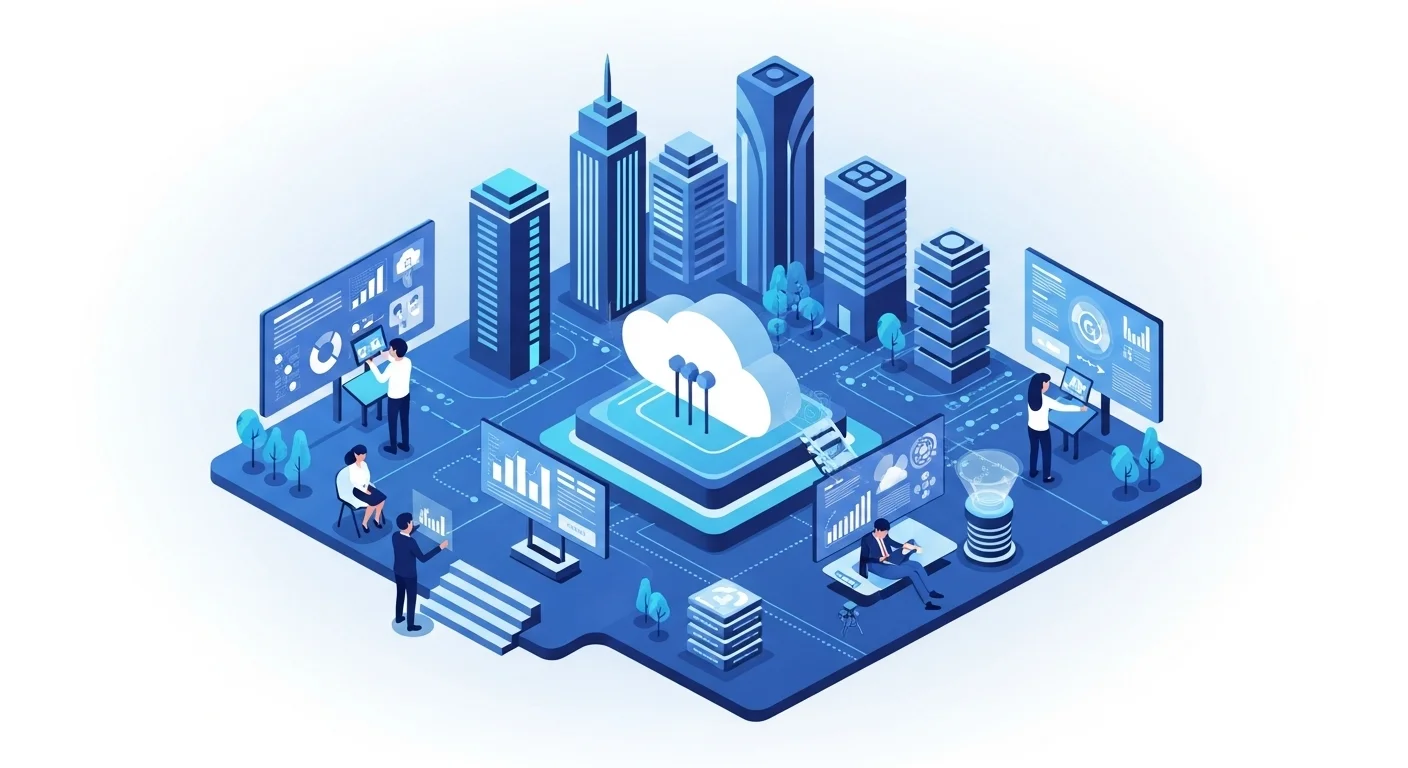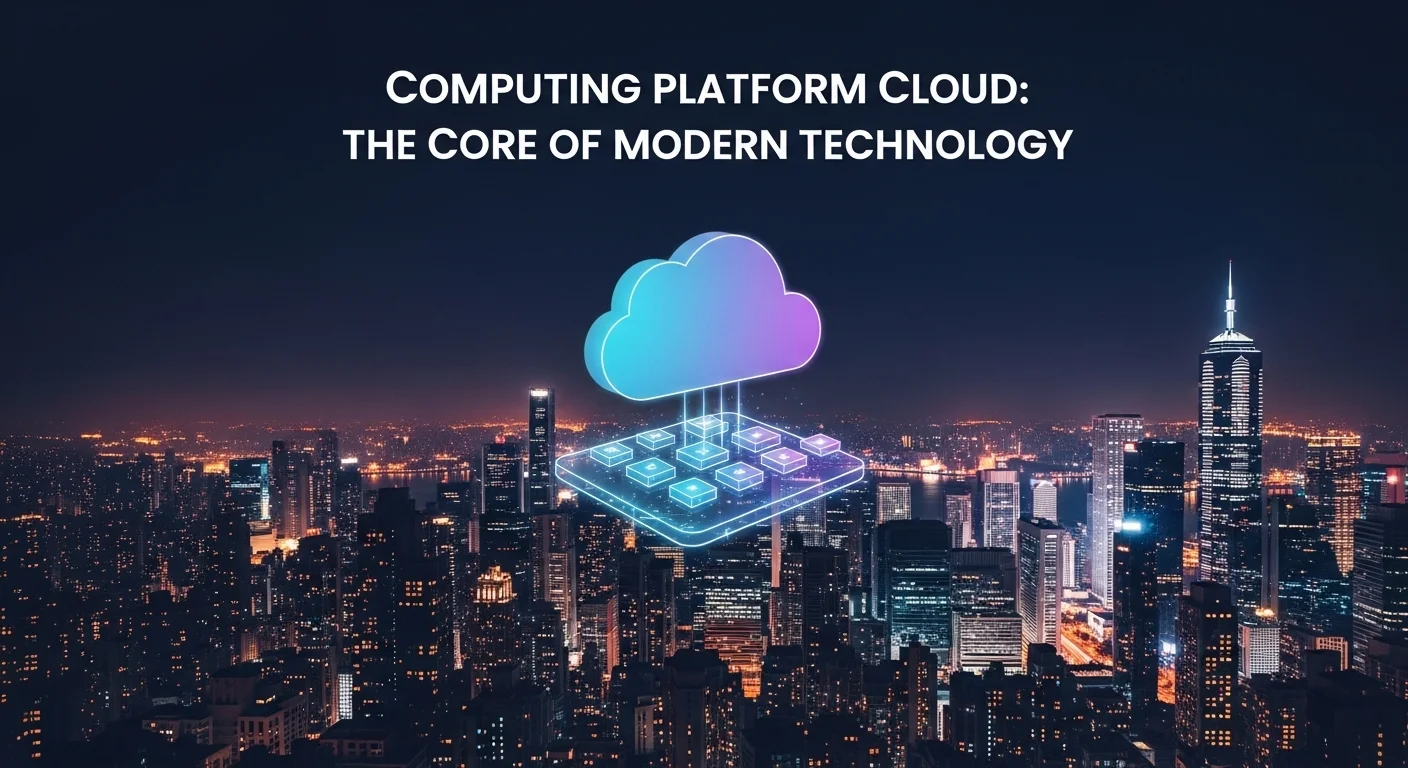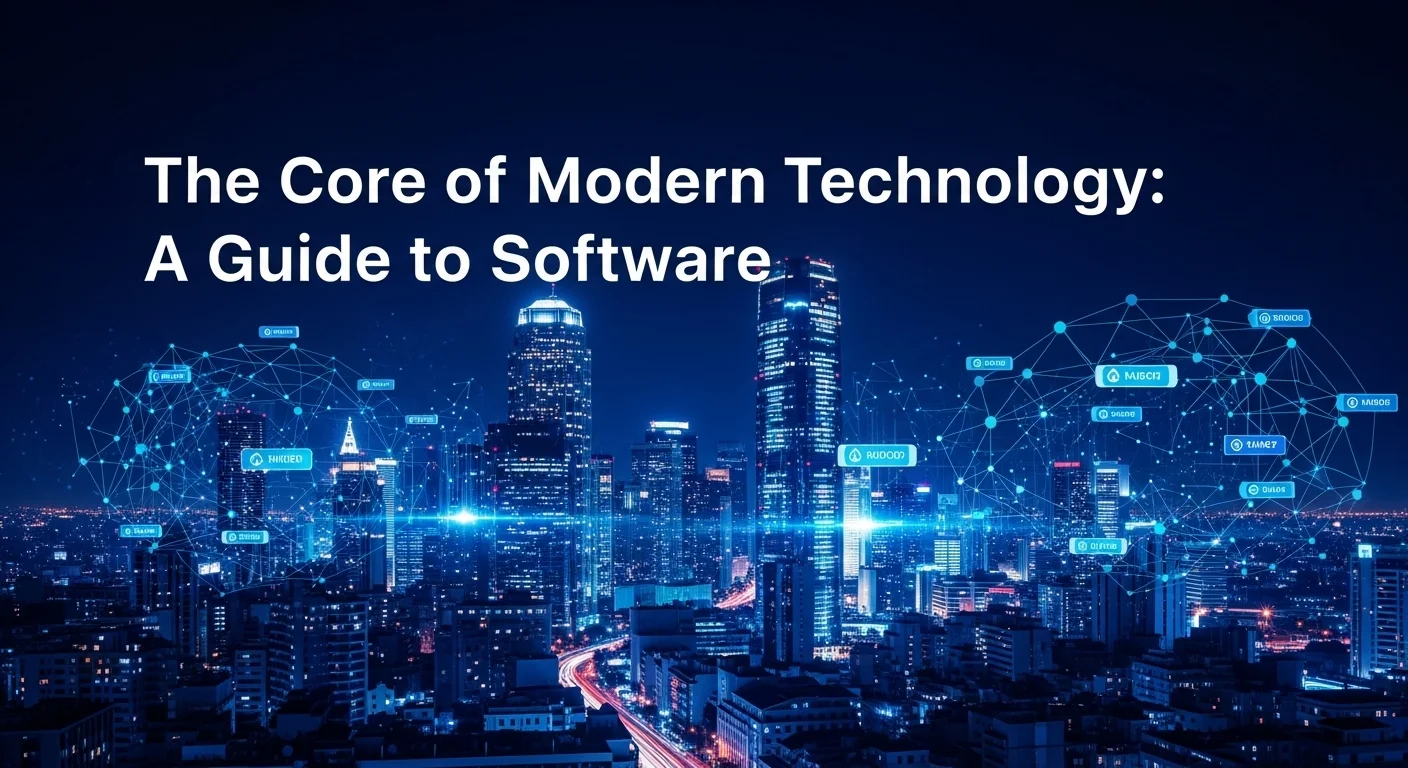What is a Cloud Platform (PaaS)? My Guide to Building Faster and Smarter

Executive Summary
I've spent over a decade helping businesses move to the cloud, and if there's one game-changer, it's the cloud platform, or what we in the industry call PaaS (Platform as a Service). It's the framework that lets developers build amazing apps without getting bogged down in server management. This guide is everything I've learned, distilled into a simple roadmap. We'll explore what PaaS really is, why it's crucial for staying competitive, and how you can leverage it, whether you're a startup or a global enterprise. Think of this as your personal cheat sheet to mastering the cloud.
Table of Contents
Table of Contents
What Exactly Is a Cloud Platform (PaaS)?
In my early days in tech, launching a new application was a marathon. We'd spend weeks, sometimes months, just setting up servers, installing operating systems, and configuring databases before writing a single line of application code. Today, that world feels ancient, thanks to what we call the Cloud Platform, or more technically, Platform as a Service (PaaS).
Think of it this way: PaaS is like leasing a fully equipped, state-of-the-art workshop. You don't have to worry about building the structure, wiring the electricity, or buying the heavy machinery. You just walk in with your raw materials (your code) and start building. The workshop owner (the PaaS provider) handles all the maintenance, security, and utilities. This means you can focus entirely on your craft: creating a great product.
To really get it, it helps to see where PaaS fits in the cloud 'stack'. It's all about how much you want to manage yourself:
- Infrastructure as a Service (IaaS): This is like leasing an empty plot of land. You get the basic ground, power, and water, but you have to build the entire house from the foundation up. You manage the operating system, the tools, and the application. It offers total control but requires a ton of work.
- Platform as a Service (PaaS): This is our fully-equipped workshop. The foundation, walls, electricity, and heavy tools (like databases and development environments) are all provided and maintained for you. You just focus on your application code and data. This is the sweet spot for most development teams.
- Software as a Service (SaaS): This is like dining out at a restaurant. You don't cook, you don't manage the kitchen—you just enjoy the finished meal. Think of Gmail or Salesforce. You use the software, but have no control over the underlying platform or infrastructure.
Why It Matters: The Real-World Impact
The shift to PaaS isn't just a technical detail; it's a fundamental change in how it transforms businesses by tackling the biggest hurdles in tech.
1. It Hides the Messy Stuff (Abstraction): The single greatest gift of a PaaS is that it hides the enormous complexity of the underlying infrastructure. Your developers no longer need to be part-time server administrators or network engineers. This frees up incredible mental bandwidth, allowing small, focused teams to build highly sophisticated applications that used to require a massive IT department.
2. It's a Time Machine for Development: I've seen teams reduce their product launch time from six months to six weeks simply by adopting a PaaS. The process of getting a server ready, which used to be a bottleneck of weeks, now takes minutes with a few clicks. This speed is everything in today's market. It means you can launch, get feedback, and improve your product while your competition is still ordering hardware.
3. It Breathes with Your Traffic (Scalability): Remember the days when a popular marketing campaign could crash your website? PaaS solves that. These platforms are designed to scale automatically. When a flood of users arrives, the platform seamlessly adds more power. When the traffic dies down, it scales back. This means you provide a smooth experience for users and only pay for the resources you actually use. It’s a game-changer for cost efficiency.
4. It's a Playground for Innovation: Because the cost to start is so low, PaaS makes it cheap and easy to experiment. A developer can spin up a new environment to test a wild idea in an afternoon, without needing a big budget approval. This 'fail-fast' culture is the engine of true innovation. It lowers the risk of trying something new, which is how breakthroughs happen.
How Cloud Platforms Drive Business Success
The technical advantages translate directly into real-world business value. Adopting a cloud platform is a strategic move that pays dividends.
For Startups: PaaS is the ultimate democratizer. It gives a small startup access to the same powerful, reliable infrastructure as a Fortune 500 company. I've mentored founders who built globally scalable products from their living rooms with just a laptop and a PaaS subscription. The pay-as-you-go model means their costs grow with their success, not before it.
For Large Enterprises: For big companies, a PaaS is the key to escaping the gravity of old, legacy systems. It allows them to modernize their applications and empower their teams to work with the speed and agility of a startup. By letting the cloud provider manage the infrastructure, they can refocus their best engineering talent on projects that create customer value, not just on keeping the lights on.
Whether it’s an e-commerce store handling a Black Friday rush, a fintech app needing rock-solid security, or an IoT company processing data from millions of devices, PaaS provides the specialized and scalable foundation they need. It's no longer just a piece of technology; it’s the engine of modern business and innovation.

A Practical Guide to Choosing and Using a Cloud Platform
Choosing a cloud platform is like choosing a long-term business partner. It's a decision that goes beyond technical specs and requires understanding your team's needs, your business goals, and the subtle differences between the major players. Here’s my breakdown based on years of guiding companies through this process.
Peeking Under the Hood: The Architecture
So, what are you actually getting with a PaaS? It's a layered cake of technology, all managed for you:
- The Foundation (IaaS): Deep down, there are massive global data centers with physical servers and networks, managed by the provider. You never see it, but this is where the raw power comes from.
- The Magic Layer (Virtualization/Containerization): This layer carves up the physical hardware into isolated, secure spaces for your applications. In the past, this was done with virtual machines, but now it's mostly done with lightweight 'containers' (think Docker and Kubernetes), which are much faster and more efficient.
- The Core Platform: This is the heart of the service. It includes a managed operating system (that you don't have to patch), the programming language runtimes (like Python, Java, or Node.js), and a suite of ready-to-use 'managed services'. These services are the secret sauce—fully managed databases, caching tools, message queues, and user authentication systems that you can plug into your app with minimal effort.
- The Control Panel (Dev Tools & APIs): This is how your developers interact with the platform. It's a set of web dashboards, command-line tools (CLIs), and APIs that allow them to deploy code, configure services, and automate everything. A good PaaS makes this experience feel seamless and intuitive.
Comparing the Heavyweights: My Personal Take
The market has a few dominant players. The 'right' choice often depends on your company's background and goals.
The 'Big Three' Hyperscalers:
- AWS Elastic Beanstalk (Amazon): This is the old guard, incredibly powerful and flexible. It integrates with Amazon's massive ecosystem of over 200 services.
My take: It's a fantastic choice if you're already in the AWS world or if you need granular control over every little detail of your infrastructure. The learning curve can be steep, but the power is undeniable. - Azure App Service (Microsoft): Microsoft's offering is a developer's dream, especially if you work with .NET. The integration with tools like Visual Studio and GitHub is flawless.
My take: If your company runs on Microsoft products, this is a no-brainer. Their hybrid cloud solutions are also best-in-class, making it great for enterprises that are gradually moving to the cloud. - Google App Engine: Google’s PaaS is known for its incredible simplicity and mind-blowing automatic scaling. It’s perfect for applications with unpredictable traffic.
My take: For mobile backends or web apps that might go viral overnight, App Engine is a lifesaver. It’s very 'hands-off', which is great for teams that just want to focus on code and not infrastructure.
The Specialized Players:
- Heroku: I have a soft spot for Heroku. They pioneered the simple `git push` deployment and have an unbeatable developer experience. It's elegant and just works.
My take: I recommend Heroku to every startup I mentor. It's the fastest way to get an idea from your head to a live URL. It might get pricier at scale, but for speed and simplicity, it's unmatched. - Salesforce Platform: This is a different beast entirely. It's a PaaS designed specifically for building apps that live inside the Salesforce CRM ecosystem.
My take: If your business lives and breathes Salesforce, this is your platform. It allows you to build custom tools that are deeply integrated with your customer data and business workflows.
Business Strategies I've Seen Win
Adopting a PaaS is a strategic shift. Here's how to do it right.
1. Start Small, Win Big: Don't try to move everything at once. I saw a company try a 'big bang' migration and fail spectacularly. The successful ones start with a single, non-critical pilot project. This lets the team learn, build confidence, and demonstrate the value to the rest of the organization.
2. Look Beyond the Sticker Price: The monthly bill for PaaS might look higher than buying a server, but this view is shortsighted. You must calculate the Total Cost of Ownership (TCO). Factor in the salaries you're no longer paying for server maintenance, the value of launching products months earlier, and the increased productivity of your developers. That's the true ROI.
3. Marry PaaS with DevOps: A PaaS gives you the tools for automation; a DevOps culture gives you the mindset. Create automated pipelines that take code from a developer's laptop to production seamlessly. This combination is what truly creates an agile, high-velocity development organization.
4. Don't Just 'Lift and Shift': You can't just take an old, monolithic application and drop it onto a PaaS expecting magic. To get the real benefits, you need to design your applications for the cloud. This means building them as a collection of smaller, independent services that can be scaled and updated separately.
5. Mind the Meter (FinOps): The pay-as-you-go model is amazing, but it can lead to surprise bills if you're not careful. I tell every client to implement FinOps (Financial Operations) from day one. Tag resources, set budget alerts, and regularly audit for waste. Financial discipline is key to long-term success in the cloud.

Pro Tips I've Learned for Mastering Your Cloud Platform
Getting started with a Platform as a Service (PaaS) is one thing; truly mastering it is another. Over the years, I've seen teams make the same mistakes and have the same breakthroughs. Here are the practical tips and advanced strategies I share with my clients to help them get the most out of their cloud investment.
My Golden Rules for Development and Operations
These are the non-negotiable best practices that separate the amateurs from the pros when building on a cloud platform.
1. Live by the Twelve-Factor App: This isn't just theory; it's a practical blueprint for building robust cloud applications. I won't list all twelve here, but some of the most critical rules I enforce are:
- Store Config in the Environment: Never, ever hardcode things like API keys or database passwords in your code. Pull them from the environment. This makes your app more secure and portable.
- Treat Your App as a Stateless Process: Your application shouldn't store any data inside itself that it needs to remember. All persistent data must live in a backing service, like a managed database. This is the secret to scaling horizontally with ease.
- Declare Dependencies Explicitly: Your app should package its own dependencies. This prevents the classic 'it works on my machine' problem and ensures consistency across all environments.
2. If You Can't See It, You Can't Fix It: A PaaS isn't a magical black box. You are still responsible for your application's health. I insist that teams set up comprehensive logging and monitoring from day one. Use the platform's built-in tools (like AWS CloudWatch or Azure Monitor) to centralize logs and track key metrics like error rates and response times. Set up alerts so you know about problems before your users do.
3. Build Security In, Don't Bolt It On: In the cloud, security is a shared job. The provider secures the platform, but you must secure your app. This means practicing DevSecOps: integrate security scans into your deployment pipeline, use the platform's identity management tools to give users the least privilege they need, and manage your secrets using a dedicated vault service.
4. Define Your World in Code (IaC): Even in a PaaS, you have to configure services. Define all of these resources—your databases, load balancers, and application configurations—as code using tools like Terraform or AWS CloudFormation. Checking this code into a Git repository gives you version control, peer review, and the ability to recreate your entire setup automatically. It's your disaster recovery plan and your daily workflow rolled into one.
How to Avoid a Shocking Cloud Bill
Nothing gives a CFO a headache like an unexpected cloud bill. Here's how to prevent that.
1. Right-Size Everything, All the Time: This is the most important cost-saving measure. Constantly monitor your resource usage. If a database is only using 10% of its CPU, shrink it to a smaller, cheaper size. Use autoscaling to automatically add capacity for peaks and remove it during quiet times. Don't pay for idle power.
2. Commit and Save: For your core, predictable workloads, use savings plans or reserved instances. Providers give you massive discounts (I've seen up to 70%) if you commit to using a certain amount of capacity for one or three years. This is free money for any stable part of your infrastructure.
3. Be a Tidy Tenant: Cloud environments get messy fast. I've found forgotten test databases and old storage volumes that have been racking up charges for months. Run regular audits, either manually or with scripts, to find and delete unused resources.
The Next Frontier: Where PaaS Is Going
The cloud is always evolving. Here’s what I’m telling my clients to prepare for next.
1. Serverless is the New PaaS: The next step in abstraction is Serverless, or Functions as a Service (FaaS). With services like AWS Lambda or Azure Functions, you don't even manage an application, just individual functions. The platform handles everything, and you pay only for the milliseconds your code is running. It's incredibly cost-effective for event-driven tasks.
2. Kubernetes is Becoming the Platform: Many teams are now building their own PaaS-like experience on top of managed Kubernetes services (like AWS EKS or Google GKE). This gives you the portability of containers with more control than a traditional PaaS. It's a more complex path, but it's becoming the standard for complex microservice-based applications.
3. AI/ML as a Service: The biggest trend is the integration of AI and Machine Learning tools directly into the platform. Services like Amazon SageMaker and Google Vertex AI are making it possible for regular development teams to build, train, and deploy sophisticated AI models without needing a team of PhDs. This is democratizing AI and will be a huge competitive advantage.
Expert Resource Tip: To keep up with how these providers stack up strategically, I always recommend my clients check out the latest Gartner Magic Quadrant for Cloud Infrastructure and Platform Services. It's a dense read, but it provides an invaluable expert analysis. You can usually find it on the Gartner research page.
Mastering a cloud platform is a journey, not a destination. It requires a commitment to continuous learning, optimization, and adopting new practices to build a tech foundation that is not just efficient today, but ready for tomorrow.
Expert Reviews & Testimonials
Sarah Johnson, Business Owner ⭐⭐⭐
The information about Computing Platform Cloud is correct but I think they could add more practical examples for business owners like us.
Mike Chen, IT Consultant ⭐⭐⭐⭐
Useful article about Computing Platform Cloud. It helped me better understand the topic, although some concepts could be explained more simply.
Emma Davis, Tech Expert ⭐⭐⭐⭐⭐
Excellent article! Very comprehensive on Computing Platform Cloud. It helped me a lot for my specialization and I understood everything perfectly.



